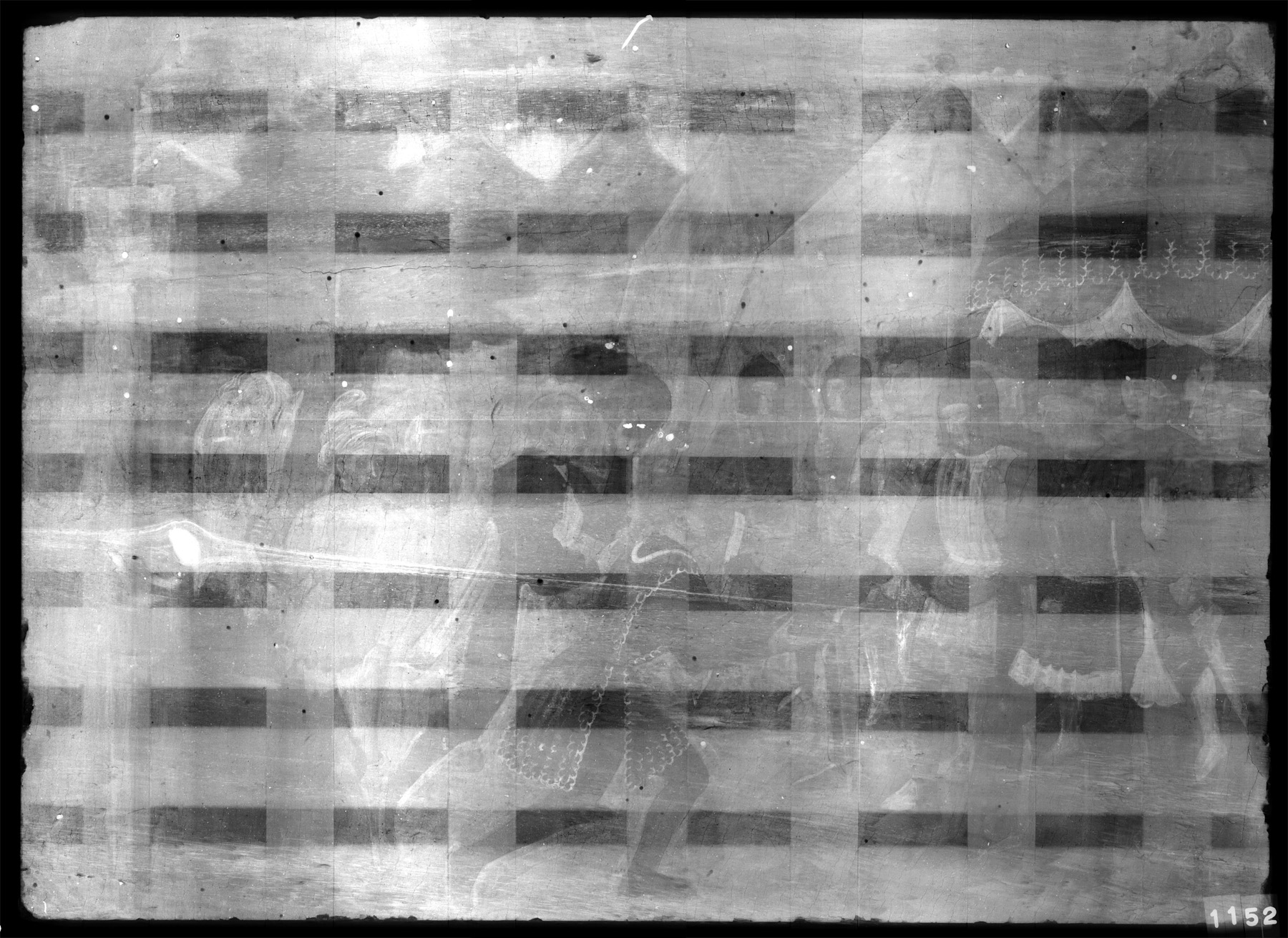Pompey's Head Brought to Julius Caesar
(Renaissance Europe )
According to the ancient writer Plutarch (45 CE-127 CE) in his famous book “Parallel Lives,” during the Roman civil war, the Roman general Pompey went back on his military alliance with Julius Caesar and tried to take asylum in Egypt. Fearing that welcoming Pompey would lead to their eventual conquer and that rejecting him would only create further tension, the Egyptians decided to behead Pompey and present his head to Caesar, who allegedly shed tears for his former ally. This panel shows the scene in which Theodotus, tutor of the Egyptian king Ptolemy XIII, presents Pompey’s severed head to Caesar.
Painted in Florence in the mid-1400s, the panel is a fragment of a long, horizontal panel originally inserted into the front of a "cassone," a large storage chest typically commissioned during the Renaissance for newly married couples. Often ordered in pairs, cassoni were painted on their fronts and sides with stories from classical mythology, the Bible, or ancient history that exemplified moral and virtuous behavior. The figures in this panel are depicted in contemporary dress to make the story more accessible to the original 15th-century viewers.
Provenance
Provenance (from the French provenir, 'to come from/forth') is the chronology of the ownership, custody, or location of a historical object. Learn more about provenance at the Walters.
Don Marcello Massarenti Collection, Rome [date and mode of acquisition unknown] [1897 catalogue: no. 82, as Paolo Uccello]; Henry Walters, Baltimore, 1902, by purchase; Walters Art Museum, 1931, by bequest.
Geographies
Italy, Florence (Place of Origin)
Measurements
Painted surface H: 15 1/16 x W: 21 x D excluding cradle: 3/8 in. (38.3 x 53.3 x 1 cm)
Credit Line
Acquired by Henry Walters with the Massarenti Collection, 1902
Location in Museum
Not on view
Accession Number
In libraries, galleries, museums, and archives, an accession number is a unique identifier assigned to each object in the collection.
In libraries, galleries, museums, and archives, an accession number is a unique identifier assigned to each object in the collection.
37.1152




